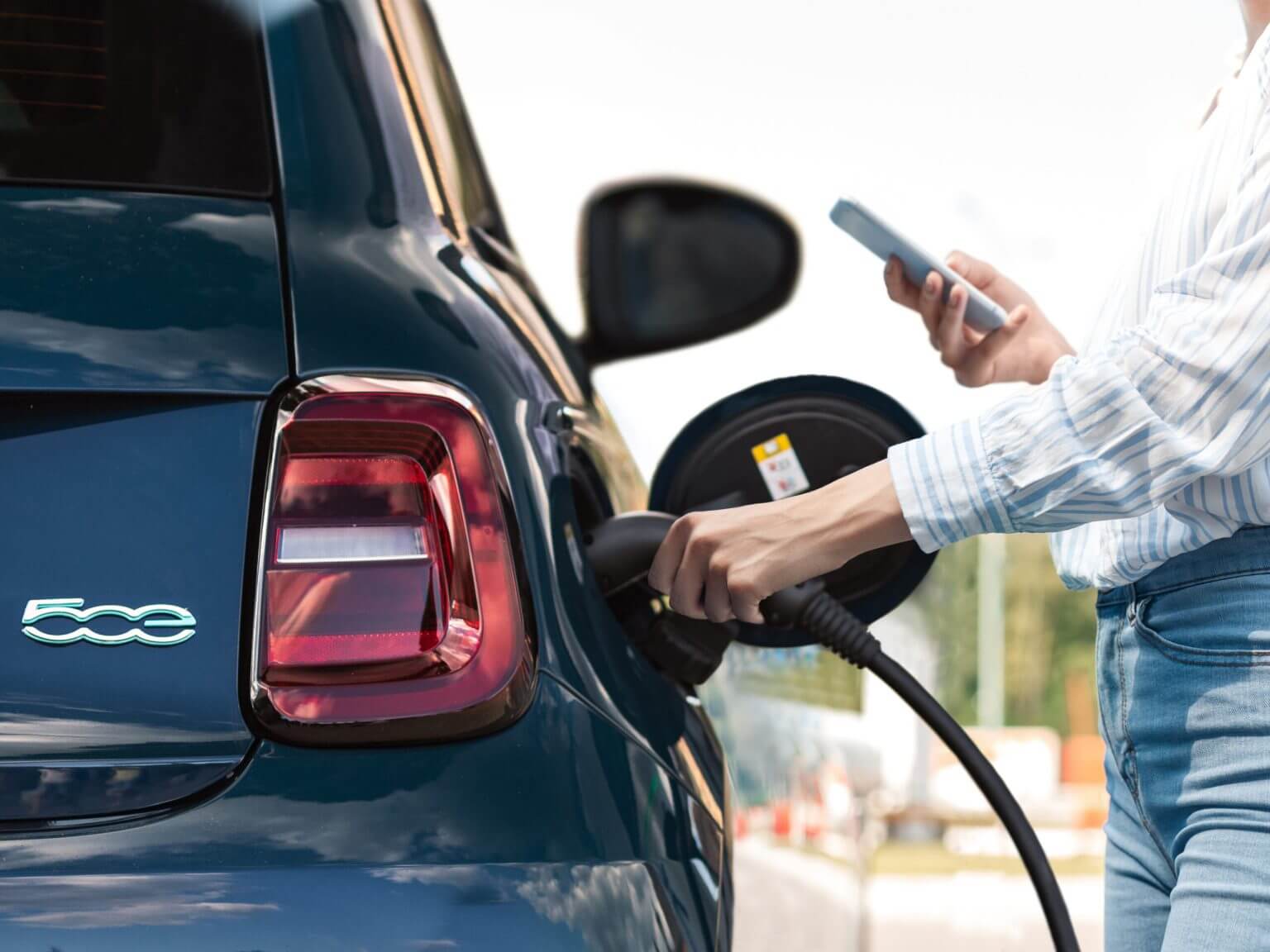Charging Dictionary
Dive into our electrifying glossary where we break down the buzzwords of the charging world. Whether you're an EV newbie or a seasoned pro, this guide will help you navigate the currents of electric vehicle terminology. Let’s get charged up!

Alternating Current (AC)
A type of electrical current that periodically reverses direction. It’s the standard form of electricity delivered to homes and is commonly used for Level 2 charging stations, making it ideal for everyday home charging.Ampere (A)
The unit of measurement for electric current. For example, a 32-amp charger can deliver a substantial amount of electricity, allowing for quicker charging times compared to lower-amp options.Battery Electric Vehicle (BEV)
A vehicle powered entirely by electric batteries and electric motors, with no gasoline engine. Examples include the Jeep Avenger or the Fiat 500e, which rely solely on electric power, promoting zero emissions.Charge Cycle
One complete process of charging and discharging a battery. It’s important for battery health, much like regular exercise is for maintaining fitness.Charge Management
The process of optimizing how and when EVs are charged. This includes scheduling charging during off-peak hours to take advantage of lower electricity rates and reduce strain on the grid, similar to how you might avoid traffic by taking a different route.Charge Point Operator (CPO)
A company that owns and operates charging stations. They manage everything from installation to maintenance, similar to how a restaurant owner manages their business.Charging Curve
A graphical representation showing how the charging rate varies over time. It illustrates how charging typically starts quickly and then slows down as the battery nears capacity, similar to filling a balloon—the last bit takes longer to fill.Charging Infrastructure
The network of charging stations, power lines, and related equipment necessary for EV operation. It’s crucial for supporting the growing number of electric vehicles, much like gas stations support traditional vehicles.Charging Network
A system of interconnected charging stations, often managed by a single company. This network allows EV drivers to find and use stations more easily, similar to a chain of gas stations.Charging Speed
The rate at which an EV's battery can be charged, typically measured in kilowatts (kW). Faster charging speeds mean less waiting time, similar to how a high-speed internet connection allows for quicker downloads.Direct Current (DC)
A type of electrical current that flows in one direction, used in fast charging stations. It allows for much quicker charging times compared to AC, enabling drivers to get back on the road faster—think of it as a highway compared to a side street.Dynamic Pricing
A pricing model where electricity rates fluctuate based on demand. For instance, charging during peak hours might be more expensive than at night, encouraging users to charge when energy is cheaper and more abundant.Electric Vehicle (EV)
A vehicle that is powered by an electric motor instead of a gasoline engine, including both battery electric vehicles (BEVs) and plug-in hybrids (PHEVs).Energy Density
The amount of energy stored per unit weight or volume in a battery. Higher energy density means longer range and less weight, much like a high-energy snack that gives you more fuel for your activities.Fleet Charging
Charging solutions tailored for a group of vehicles, often used by businesses with multiple EVs. This setup allows for efficient management and scheduling of charging times to maximize uptime for delivery or transportation services.Green Charging
Charging practices that utilize renewable energy sources, such as solar or wind power. This approach not only powers vehicles but also contributes to environmental sustainability, making your drive even greener.Load Balancing /Management
Strategies to control electricity demand, ensuring the power grid isn’t overwhelmed. It’s like a traffic manager ensuring smooth flow during rush hour, preventing blackouts.Onboard Charger
The device inside an electric vehicle that converts AC power from charging stations into DC power for the battery. Think of it as the vehicle’s own power converter, allowing it to use standard outlets.Plug-in Hybrid Electric Vehicle (PHEV)
A vehicle that combines a traditional internal combustion engine with an electric motor and can be charged from an external source. It offers flexibility, allowing drivers to switch between electric and gasoline power.Public Charging Station
Charging points available to all electric vehicle users, often located in public areas like shopping centers or parking lots. These stations increase accessibility, making it easier for drivers to recharge on the go.Range Anxiety
The concern about running out of battery power before reaching a charging station. This is a common issue for new EV owners, akin to a hiker worrying about running out of water before finding a stream.Range Extender
A small auxiliary engine found in some electric vehicles that generates additional electricity to extend the vehicle’s range. It’s like having a backup battery—if your primary power source runs low, you still have an alternative to keep you going.Regenerative Braking
A system that captures energy normally lost during braking and uses it to recharge the battery. It’s like a bicycle that generates power as you pedal downhill, turning kinetic energy into stored energy.Smart Charger
A charger that can communicate with both the vehicle and the grid to optimize charging times and rates. For instance, it can charge when electricity is cheapest or when solar power is available, maximizing efficiency and savings.Supercharger
A high-power charging station designed specifically for rapid charging of electric vehicles, allowing for significant range recovery in a short time. It’s like a pit stop for race cars, getting them back on track quickly.Vehicle-to-Load (V2L)
A feature that allows electric vehicles to supply power to other devices, such as appliances or tools. It’s akin to using a power bank; you can draw energy from your car to power other electronics during a camping trip.Wireless Charging
A technology that allows vehicles to charge without physical connections, using electromagnetic fields. It’s similar to how some smartphones charge on a charging pad, offering convenience and ease of use.More questions? Let's chat!
Contact Free2move eSolutions anywhere, anytime at +1 (833) 32-CHARGE or supportf2m@f2m-esolutions.com.
